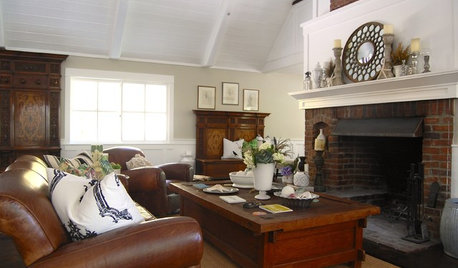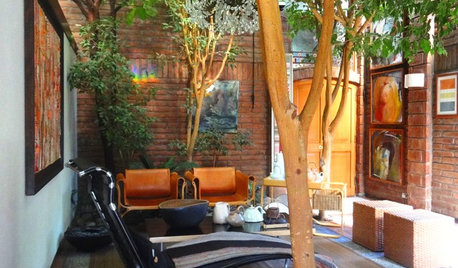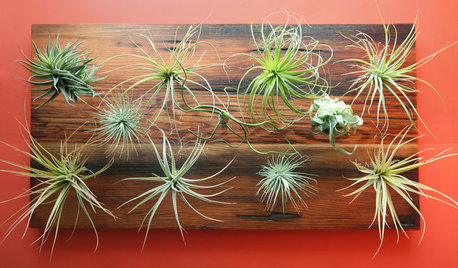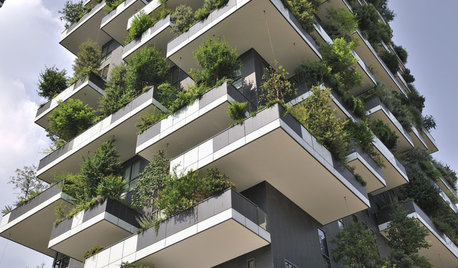Urban tree grief
User
8 years ago
Featured Answer
Sort by:Oldest
Comments (20)
wisconsitom
8 years agofloral_uk z.8/9 SW UK
8 years agoRelated Discussions
Urban tree options/Zone 6/understory options?
Comments (0)I have an urban property here in Connecticut, and I am about to get rid of a large white pine in my north-facing yard, which is sick, and much too large for the area. I would like to plant something unusual, either flowering or fruiting, that will do okay in a northern exposure with somewhat reduced noon sun. A small Star magnolia or dogwood are possibilities. Azalea perhaps? I even considered a chinese chestnut which might be nice. I have seen cherry trees do well in town and bear nicely... The idea of either fruit or nuts from my own tree really appeals to me... I am open to suggestions! Thanks, --Rick...See MoreSmall tree for shaded urban garden?
Comments (1)How tall?...See MoreUrban Outfitters tree shower curtain
Comments (2)Welcome to GardenWeb, claireking!...See MoreQuercus Urban Pinnacle oak tree
Comments (99)We bought one of these from the local health food store (!) about five years ago. We are both foresters, so we knew how to plant it and how care for it. This tree is absolutely amazing. It grows two feet or so per season (and we are in far northern WI, so the season is short). The habit seems to be upright growth with both straight and crooked laterals. I keep pruning it to keep the branches above our heads. It is growing in a less than optimum place--near a cedar hedge, sidwalk and driveway-and it still grows superbly. the soil is a well-drained fertile very sandy loam, which obviously agrees with the tree. The squirrels go nuts over the acorns--I never get even one to use in decorations. They harvest them all, when they are still green, in a mad frenzy of grabbing acorns and shredding leaves. The acorns that the squirrels forget readily sprout in the grass. All in all, a great tree to have around....See Morewisconsitom
8 years agoedlincoln
8 years agoDan _Staley (5b Sunset 2B AHS 7)
8 years agoEmbothrium
8 years agofloral_uk z.8/9 SW UK
8 years agolast modified: 8 years agoedlincoln
8 years agolast modified: 8 years agoUser
8 years agolast modified: 8 years agofloral_uk z.8/9 SW UK
8 years agolast modified: 8 years agoUser
8 years agodbarron
8 years agorusty_blackhaw
8 years agofloral_uk z.8/9 SW UK
8 years agoUser
8 years agodavidrt28 (zone 7)
8 years agowisconsitom
8 years agolast modified: 8 years agoEmbothrium
8 years agoarbordave (SE MI)
8 years ago
Related Stories

LIFE10 Ways to Work Through Grief Triggers During the Holidays
A year after losing her sister, she was facing another holiday. Here’s how one woman learned to find joy again
Full Story
LIFE10 Ways to Cope With Grief During the Holidays
If you are experiencing loss, take it from an experienced griever — life has changed forever, but it does get better
Full Story
HOUZZ TOURSMy Houzz: Urban Cottage Style in a Woodsy Wonderland
With a detached guest suite, a pool amid natural rock and an abundance of towering trees, this California house is made in the shade
Full Story
LANDSCAPE DESIGNPretty Trees for Patios, Paths and Other Tight Spots
Choose trees for their size, shape and rate of growth — or shape them to fit your space. Here's how to get started
Full Story
HOUZZ TOURSHouzz Tour: Eclectic Chilean Home Embraces Trees
Ficus trees star in the interior courtyard of this Santiago house, which celebrates its design history, quirks and mix of styles
Full Story
URBAN GARDENSDirt Optional: Amazing Air Plants for Wall or Tree
Succulents and air plants are stunning on winter walls — and the Christmas tree
Full Story
THE ART OF ARCHITECTUREWorld of Design: Trees Bring Nature to a High-Rise in Milan
Discover ‘the most beautiful and innovative skyscraper in the world’ — the foliage-filled Bosco Verticale — and tour one of its apartments
Full Story
HOUZZ TOURSMy Houzz: Modern Urban Oasis in Austin
Rebuilt family home features indoor-outdoor living, a master bedroom 'treehouse' and playful touches
Full Story
GARDENING GUIDESLush, Foodie Abundance in a Small Urban Garden
This modest backyard garden provides its owner with fruit and vegetables all year round, thanks to an innovative low-maintenance approach
Full Story
GARDENING GUIDESHow to Keep Your Trees Healthy
Ensure your trees’ vigor for years to come with these tips for protecting roots, watering effectively and more
Full Story






Embothrium